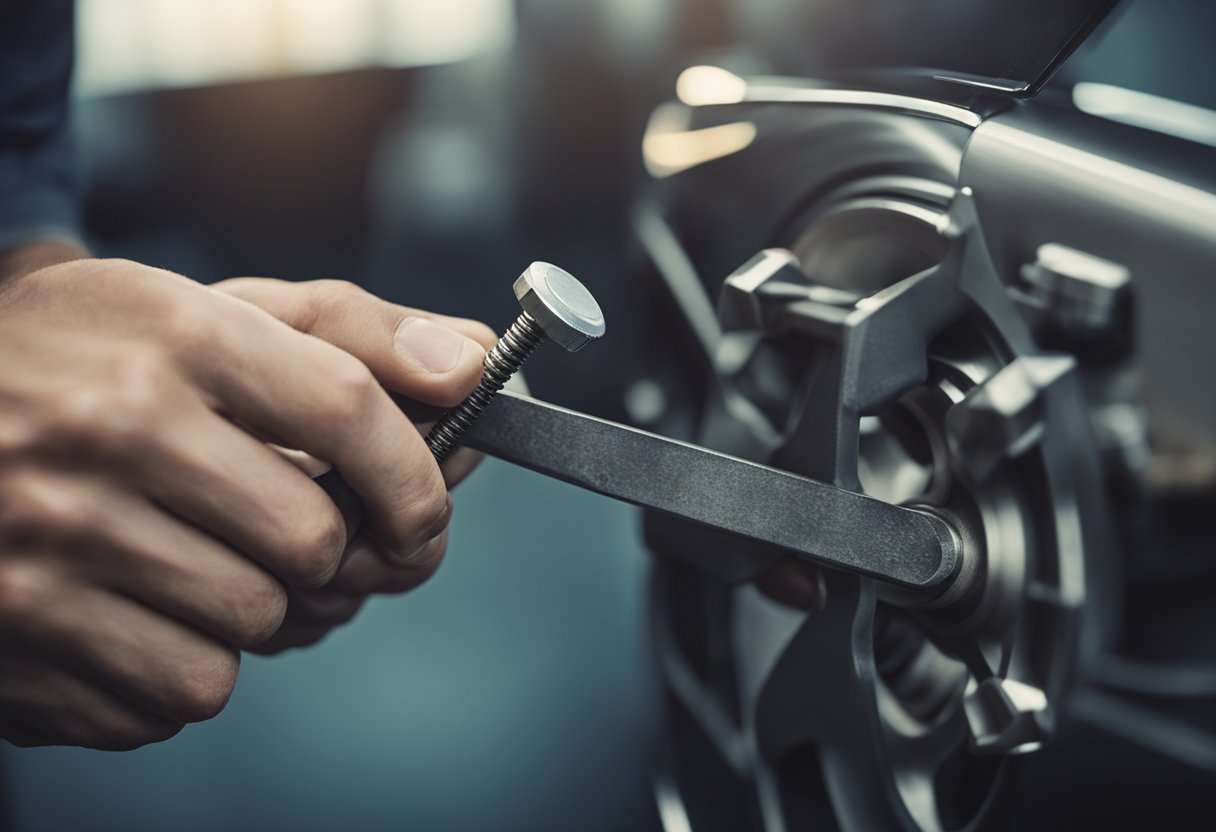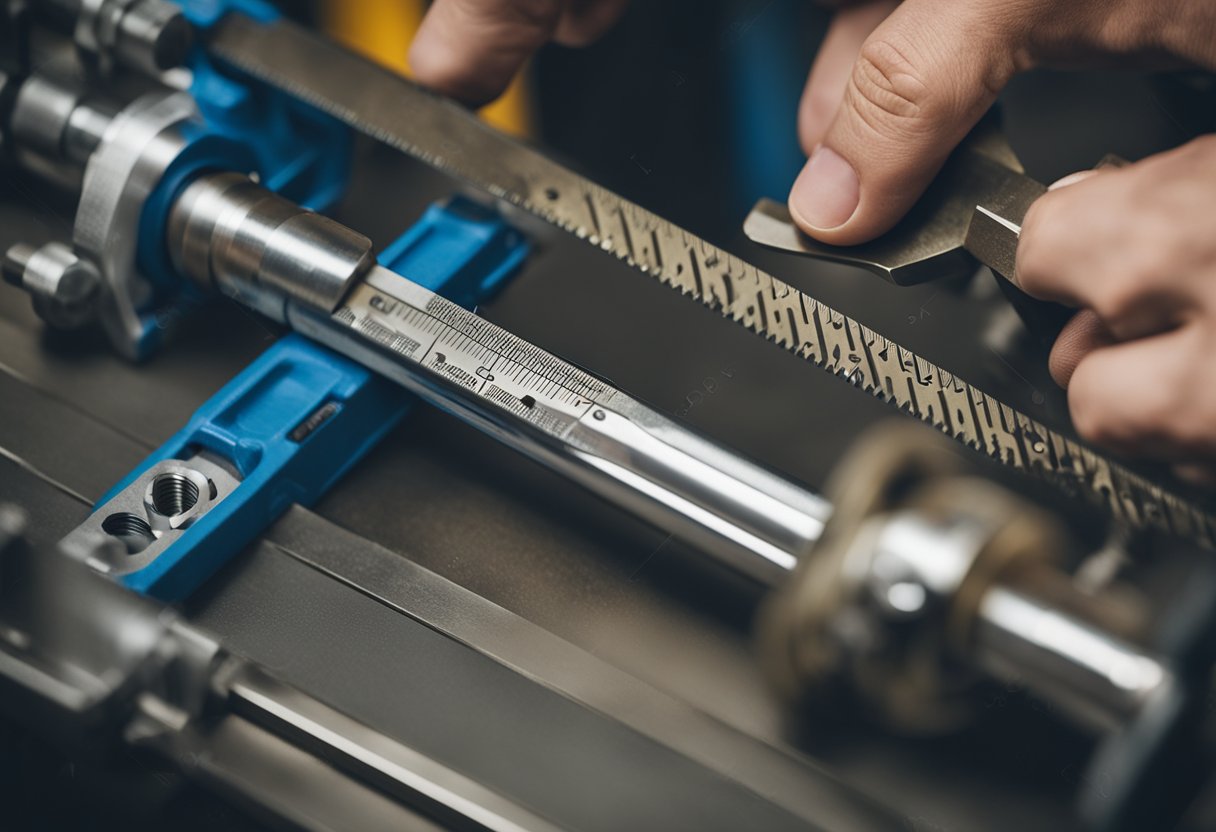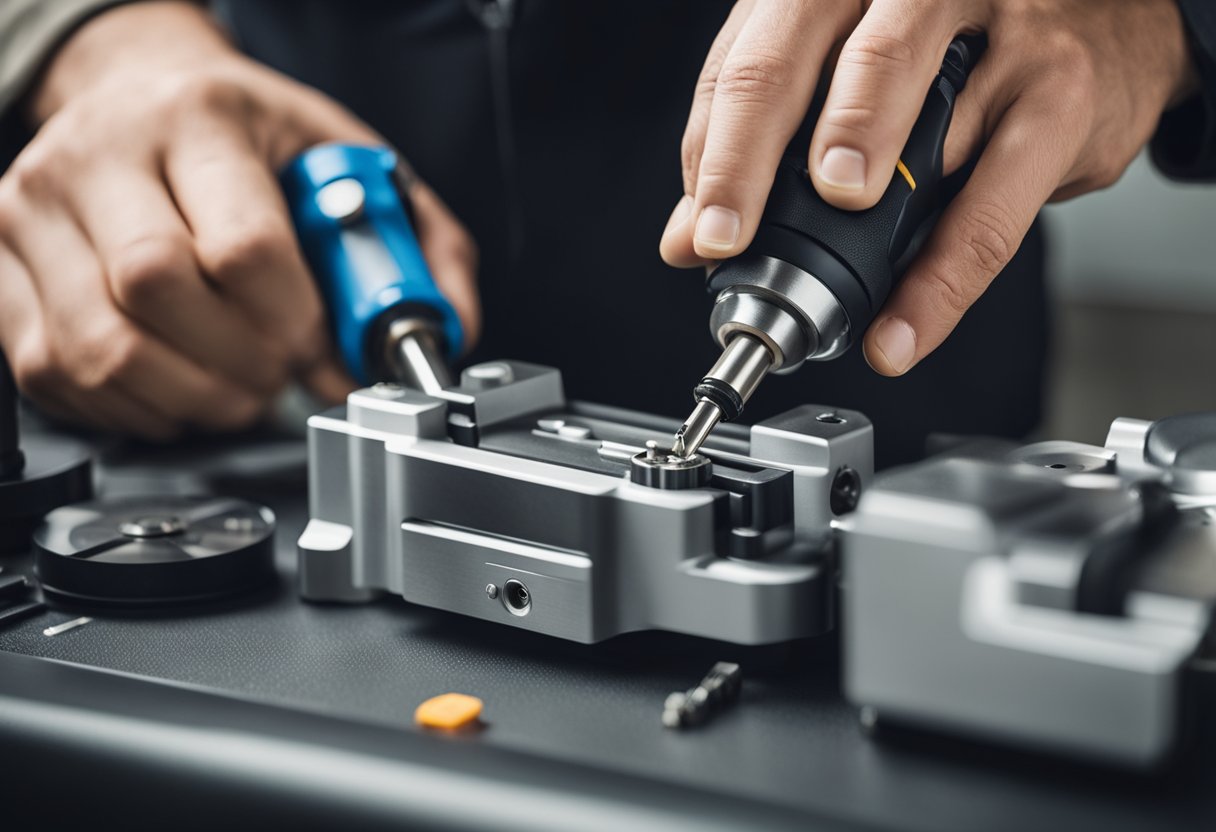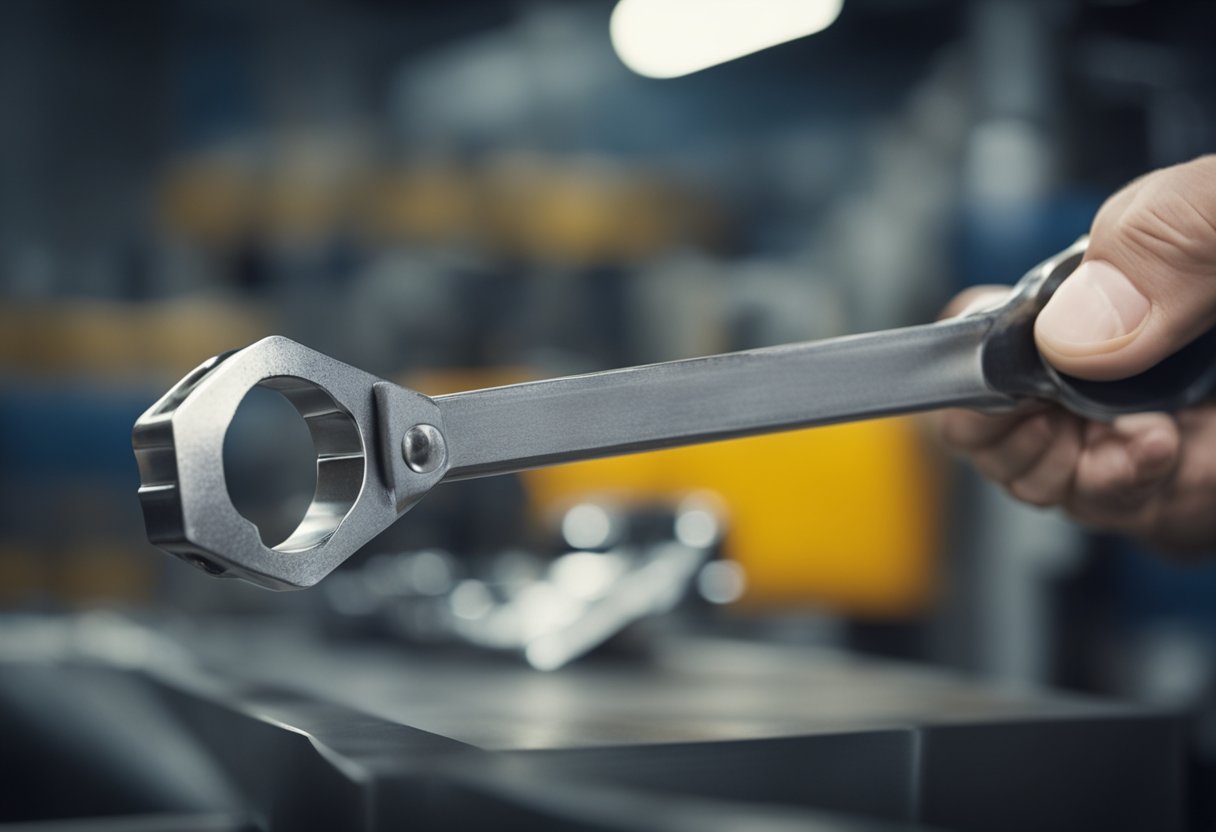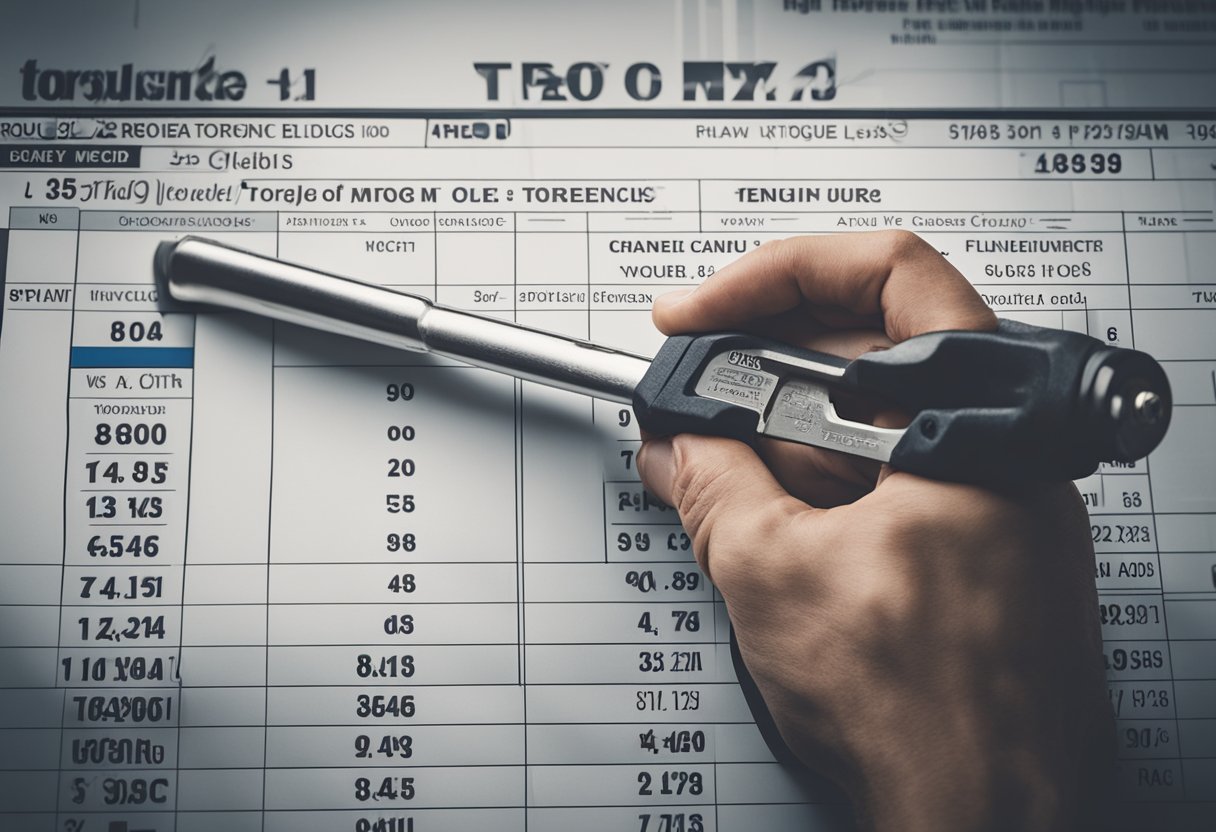Estimating torque by hand is a crucial skill for anyone who works with machinery, automobiles, or any other equipment that requires bolts and nuts to be tightened. Torque is the force that causes an object to rotate around an axis or pivot point, and it is measured in newton-meters (Nm) or pound-feet (lb-ft). While torque wrenches are the most accurate way to measure torque, they are not always available or practical. In such cases, it becomes necessary to estimate torque by hand.
Understanding torque is the first step towards estimating it by hand. Torque is the product of force and distance, and it is always measured at a specific point of rotation. The force is the amount of pressure applied to the object, while the distance is the length of the lever arm that extends from the pivot point to the point of force application. The greater the force or the distance, the greater the torque.
Key Takeaways
- Torque is the force that causes an object to rotate around an axis or pivot point, and it is measured in newton-meters (Nm) or pound-feet (lb-ft).
- Torque is the product of force and distance, and it is always measured at a specific point of rotation.
- Estimating torque by hand requires an understanding of the fundamentals of force and distance and the tools and materials involved.
Understanding Torque
As someone who works with mechanical systems, it is important to understand the concept of torque. Torque is the rotational force that is applied to a fastener when tightened. It is measured in units of newton meters (Nm), which is the SI unit for torque.
Torque is a crucial aspect of fastening bolts and nuts. Having the correct torque is essential for ensuring that the fastener stays securely in place and that the material being fastened is held together with the appropriate amount of force. Applying too little torque can result in the fastener coming loose, while applying too much torque can damage the fastener or the material being fastened.
To understand torque, it is important to understand the concept of force. Force is the push or pull on an object that results in its motion or deformation. Force is measured in units of newtons (N), which is the SI unit for force.
Torque is calculated by multiplying the force applied by the distance from the point of rotation to the center of mass of the object. This means that the amount of torque that can be applied by hand depends on the force that can be exerted and the distance from the point of rotation to the center of mass of the object.
In the next section, we will discuss how to estimate torque by hand when a torque wrench is not available.
Fundamentals of Force and Distance
https://www.youtube.com/watch?v=jg4e8W44_E4&embed=true
As an engineer, I often need to estimate torque by hand. To do so, I need to have a good understanding of the fundamentals of force and distance.
Force is the push or pull that can cause an object to move or change its shape. It is measured in Newtons (N) and can be represented by vectors. The direction of the force is important in determining the direction of the torque.
Distance is the length between two points, and it is measured in meters (m). In torque estimation, distance is also known as the lever arm or radius. The lever arm is the perpendicular distance between the axis of rotation and the line of action of the force. The longer the lever arm, the greater the torque.
The center of mass is the point where the mass of an object is concentrated. It is important to consider the center of mass when estimating torque because the torque depends on the distance between the force and the axis of rotation.
In summary, torque estimation requires a good understanding of force, distance, and the center of mass. By considering these fundamentals, we can estimate torque by hand with confidence.
Torque Calculation Basics
https://www.youtube.com/watch?v=pOFoBECnc_8&embed=true
As an engineer, it is essential to understand how to calculate torque by hand. Torque is a measure of rotational force, and it is necessary to calculate when designing mechanical systems. The formula for torque is straightforward: torque equals force times distance.
To calculate torque, you must first determine the force exerted by the object at the point of rotation. Then, you must calculate the distance from the point of rotation to the center of mass of the object. Finally, the torque is calculated by multiplying the force and the distance.
It is essential to note that the distance used in the torque formula is the perpendicular distance between the point of rotation and the line of action of the force. This distance is also known as the moment arm.
When calculating torque, it is crucial to consider the direction of the force. If the force is perpendicular to the moment arm, the torque will be at its maximum. If the force is parallel to the moment arm, there will be no torque.
To calculate the net torque of an object, you must consider all the forces acting on the object. The net torque is the sum of all the torques acting on the object. If the net torque is zero, the object will be in rotational equilibrium.
In summary, calculating torque by hand is a crucial skill for engineers and anyone working with mechanical systems. Remember to use the torque formula, consider the direction of the force, and calculate the net torque by summing all the torques acting on the object.
Tools for Estimating Torque
When it comes to estimating torque by hand, there are several tools that can be used. While a torque wrench is the most accurate tool for measuring torque, there are other tools that can be used to estimate torque with decent accuracy. Below are some of the tools that can be used to estimate torque by hand:
Socket Wrench
A socket wrench is a tool that can be used to tighten or loosen bolts and nuts. It is a versatile tool that can be used in a variety of applications. When estimating torque by hand, a socket wrench can be used to tighten or loosen bolts and nuts to a certain degree. By using a socket wrench, you can get a good idea of how much torque is being applied to the bolt or nut.
Screwdriver
A screwdriver is another tool that can be used to estimate torque by hand. While it is not as accurate as a torque wrench, it can be used to tighten or loosen screws to a certain degree. By using a screwdriver, you can get a good idea of how much torque is being applied to the screw.
Power Tools
Power tools such as impact drivers and drills can also be used to estimate torque by hand. These tools are designed to apply a certain amount of force to a bolt or nut. By using a power tool, you can get a good idea of how much torque is being applied to the bolt or nut.
It is important to note that while these tools can be used to estimate torque by hand, they are not as accurate as a torque wrench. If you need to apply a specific amount of torque to a bolt or nut, it is best to use a torque wrench. However, if you don’t have a torque wrench available, these tools can be used to estimate torque with decent accuracy.
Materials and Torque
When estimating torque by hand, it is essential to have the right materials. The materials needed for this process include bolts, objects, materials, and fasteners. The material of the bolt and object can affect the torque required to fasten them together. Therefore, it is essential to choose the right material for the job.
The thread pitch of the bolt also plays a crucial role in estimating torque by hand. The thread pitch is the distance between the threads on the bolt. A finer thread pitch requires more torque to tighten, while a coarser thread pitch requires less torque. Therefore, it is important to know the thread pitch of the bolt to estimate the correct amount of torque required.
The fastener used to tighten the bolt also affects the torque required. A fastener with a higher coefficient of friction requires more torque to tighten, while a fastener with a lower coefficient of friction requires less torque. Therefore, it is essential to choose the right fastener for the job to estimate the correct amount of torque required.
In conclusion, choosing the right materials for estimating torque by hand is crucial. The material of the bolt and object, the thread pitch of the bolt, and the fastener used to tighten the bolt all play a crucial role in estimating torque by hand.
Avoiding Common Mistakes
When estimating torque by hand, it is important to avoid common mistakes that can lead to overtightening or insufficient preload. Here are some tips to help you avoid these mistakes:
-
Use the correct tool: Make sure you are using the correct tool for the job. Using the wrong tool can lead to overtightening or insufficient preload. For example, using a regular wrench instead of a torque wrench can result in overtightening.
-
Know the recommended torque: Before you start tightening a bolt, make sure you know the recommended torque for that bolt. This information can usually be found in the manufacturer’s manual or online. Knowing the recommended torque will help you avoid overtightening.
-
Use a torque chart: If you don’t have a torque wrench, you can use a torque chart to estimate the torque. A torque chart provides the recommended torque for various bolt sizes and materials.
-
Don’t rely on feel alone: While experience can be helpful in estimating torque, it is not always reliable. Don’t rely on feel alone to determine the torque. Use a torque chart or other method to ensure you are applying the correct amount of torque.
-
Check the preload: After tightening a bolt, check the preload to ensure it is within the recommended range. Preload is the tension on the bolt before it is subjected to any external loads. Insufficient preload can result in bolt failure.
By following these tips, you can avoid common mistakes when estimating torque by hand and ensure that your bolts are tightened to the correct specifications.
Advanced Torque Concepts
When it comes to estimating torque by hand, there are some advanced concepts that can help you better understand the mechanics of rotational motion.
One of these concepts is angular acceleration, which is the rate of change of angular velocity. This is important because it helps you understand how quickly an object will rotate given a certain amount of torque. The formula for angular acceleration is:
α = τ / I
Where α is the angular acceleration, τ is the torque, and I is the moment of inertia. The moment of inertia is a measure of an object’s resistance to rotational motion, and it depends on the object’s mass and shape.
Another important concept is the force vector, which is a mathematical representation of the forces acting on an object. This is important because it helps you understand how the forces are distributed and how they contribute to the object’s motion.
Energy is also an important concept when it comes to torque. The amount of energy required to rotate an object is directly related to the amount of torque applied. This is because torque is a measure of the force applied to an object in a rotational or angular motion, and work is the amount of energy required to move an object against a force.
Finally, horsepower is a unit of power that is commonly used to describe the output of engines and motors. It is related to torque through the formula:
P = τω
Where P is the power, τ is the torque, and ω is the angular velocity. This formula shows that the amount of power an engine or motor produces is directly related to the amount of torque it can generate.
In conclusion, understanding these advanced torque concepts can help you better estimate torque by hand and gain a deeper understanding of the mechanics of rotational motion.
Practical Applications of Torque
As a mechanical engineer, I have found that understanding torque is essential for many practical applications. Torque is the rotational force applied to an object and is measured in units of newton meters (Nm) or pound-feet (lb/ft). The amount of torque that can be applied by hand depends on various factors such as the mass of the object, the distance from the pivot point, and the strength of the person applying the force.
One practical application of torque is when opening or closing a door. For example, if a door is too tight, lubricating the hinges can reduce the friction and make it easier to open and close. Additionally, using a cheater bar, which is a long pipe that is placed on the end of a wrench, can increase the amount of torque that can be applied by hand, making it easier to loosen or tighten a stubborn bolt.
Another practical application of torque is in DIY projects. For example, when assembling furniture, it is important to apply the correct amount of torque to each bolt or screw to ensure that the furniture is sturdy and safe to use. Using a torque wrench can help ensure that the correct amount of torque is applied to each fastener.
Finally, understanding torque is important in many mechanical engineering applications. For example, when designing a machine, it is important to calculate the amount of torque that each component can handle to ensure that the machine operates safely and efficiently. Additionally, understanding torque can help engineers determine the appropriate size and strength of the components used in a machine.
In conclusion, understanding torque is essential for many practical applications, from opening a door to designing a machine. By understanding the factors that affect torque and how to measure it, you can ensure that you are applying the correct amount of force to each object, making your projects safer, more efficient, and more effective.
Frequently Asked Questions
What is the maximum amount of torque that can be applied by hand?
The maximum amount of torque that can be applied by hand varies from person to person. According to MyCalcu, the average person can typically apply between 30 and 50 Nm of torque by hand. However, this is just an average, and the actual amount of torque that can be applied depends on factors such as hand strength, grip, and technique.
How do you manually measure torque?
To manually measure torque, you can use a torque wrench or a torque screwdriver. However, if you don’t have access to these tools, you can estimate torque by using a formula that takes into account the amount of force applied and the length of the lever arm. For more information on how to estimate torque without a torque wrench, see Tools Advisor and Best Lasers and Levels.
How do you calculate torque without a torque wrench?
To calculate torque without a torque wrench, you can use a formula that takes into account the amount of force applied and the length of the lever arm. The formula is: torque = force x lever arm length. For more information on how to calculate torque without a torque wrench, see Tools Advisor and Best Lasers and Levels.
What is the hand tight torque value in Nm?
The hand tight torque value in Nm is the amount of torque that can be applied by hand without the use of a torque wrench. According to CarsTopics, the hand tight torque value for most applications is around 20 Nm. However, this value can vary depending on the specific application and the manufacturer’s recommendations.
How much torque is required to tighten a screw without a torque wrench?
The amount of torque required to tighten a screw without a torque wrench depends on the size of the screw and the material it is being tightened into. Generally, a good rule of thumb is to tighten the screw until it is snug, and then apply a quarter to a half turn more. For more information on how to estimate torque without a torque wrench, see HandyTooler.
Can you estimate torque by hand accurately?
Estimating torque by hand can be accurate, but it depends on a number of factors such as hand strength, grip, and technique. It is always best to use a torque wrench or a torque screwdriver when accuracy is critical. However, if you don’t have access to these tools, you can estimate torque by using a formula that takes into account the amount of force applied and the length of the lever arm. For more information on how to estimate torque without a torque wrench, see Tools Advisor and Best Lasers and Levels.

Hi, I’m Sal Muller of Tooltrip.com. My DIY experience led me to understand essential power tools for home projects. Tooltrip.com guides enthusiasts and professionals in choosing right tools for any job. I provide concise top tool reviews for easier, efficient DIY.

